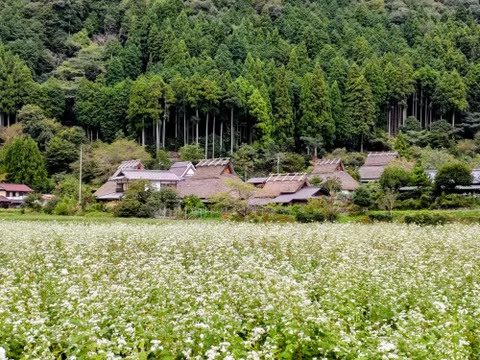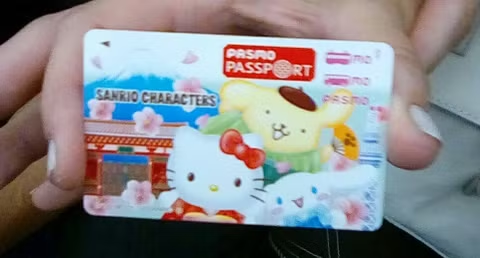Blog
Learn from our local travel experts and guides
GoWithGuide Posts

General
Georgia Tourism in 2025: A Traveler’s Data-Driven Guide
Georgia
Do you love wine? Well, you can thank Georgia for that! This country is said to be the birthplace of wine, with Georgians making the drink for over 8,000 years! Their technique is also listed on the UNESCO Intangible Cultural Heritage of Humanity list!If ...

Courtney Cunningham
Jan 27, 2025

General
Tourism In Istanbul Statistics, 2025: Your Quick Travel Guide
Istanbul, Turkey
Istanbul, the city that bridges continents and eras, has been the heart of three major empires: the Eastern Roman, Byzantine and Ottoman. This metropolis, once known as Byzantium and later Constantinople, officially became Istanbul in 1930. Despite its ri...

Courtney Cunningham
Jan 17, 2025

General
Tourism In Poland Statistics 2025: Why Travelers Keep Falling for Poland
Poland
Why is Poland so famous for tourism? That might be because it’s home to the world’s biggest castle complex, the oldest restaurant in Europe (Piwnica Swidnicka) and a capital city that was completely destroyed and then rebuilt due to World War II.But it’s ...

Courtney Cunningham
Jan 17, 2025

General
Tourism In Turkey Statistics 2024: Insights Through Numbers for Planning Your Trip
Turkey
If you’ve been thinking of heading to Turkey, then the first thing you need to know is that its capital is actually Ankara, not Istanbul! From the bustling streets of Istanbul to the tranquil beaches of Antalya, Turkey offers an unforgettable adventure fo...

Courtney Cunningham
Dec 20, 2024

General
Tourism in Tangier Statistics 2024: Your Travel Guide To The Door Of Africa
Tangier, Morocco
When it comes to Morocco, everybody’s obsessed with Marrakech or Casablanca (and with good reason). But did you know that Tangier has been a filming location for two James Bond movies and the popular Christopher Nolan film, Inception? Nestled at the cross...

Courtney Cunningham
Jan 23, 2025

General
Tourism In Italy Statistics 2024: Your Quick Travel Guide To The Beautiful Country
Italy
Planning a trip to Italy can be exciting, delicious (we all know why), and sometimes a bit messy! With so much to see and do, from historic landmarks to mouthwatering gelato stops, it's easy to feel like you're wandering through a maze of options. Finding...

Ajitsa Ashihundu
Nov 13, 2024

Travel Tips
2024 Kenya Safari Private Guide: What It Costs and What to Expect
Nairobi, Kenya
IntroductionPlanning a Kenya safari trip — overwhelming! Did you know Kenya is known as the "land of the original safari"? That’s right. It has 25 national parks and 18 national reserves. Kenya has been the world’s leading safari destination since 2015. M...

Michelle Hsieh
Nov 17, 2024

General
Tourism In Sintra Statistics 2024: A Closer Look At The Romantic Town's Travel Trends
Sintra, Portugal
Nestled among the lush hills of the Portuguese Riviera, Sintra is a fairy tale town where the whispers of history blend seamlessly with the vibrant colors of nature. As you wind through the cobblestone streets, the scent of jasmine and pine fills the air,...

Courtney Cunningham
Sep 14, 2024
Guide's Posts

Travel Tips
Why Nepal Is The Best Country For A Vacation
Kathmandu, Nepal
Nepal is often considered an excellent destination for vacation due to its unique combination of stunning landscapes, rich cultural heritage, and diverse activities for travelers. Here are several reasons why Nepal is often regarded as an appealing vacati...

Gautam D.
Dec 28, 2023

Travel Tips
"Unlocking India's Hidden Treasures: Your Ultimate Guide to Booking Certified Tour Guides"
Delhi, India
India, with its rich history, diverse culture, and stunning landscapes, is a treasure trove waiting to be explored. From the bustling streets of Delhi to the serene backwaters of Kerala, this country offers a kaleidoscope of experiences. However, navigati...

Asif K.
May 13, 2024

Food & Drink
Culinary Journeys: A Taste of Nepal's Gastronomy
Nepal
In the heart of the Himalayas, Nepal offers more than just panoramic views and trekking adventures; it presents a culinary odyssey that is as diverse and rich as its landscapes. Nepalese cuisine, shaped by its multicultural heritage and geographical varia...

Prem L.
May 17, 2024

Nature
Eco-Tourism Adventures: Preserving Nepal's Natural Beauty
Pokhara, Nepal
Nepal, a land of breathtaking landscapes and diverse wildlife, has long been a magnet for adventurers and nature enthusiasts. However, with the influx of tourists, the delicate balance of its ecosystems is under threat. In response to this challenge, a ne...

Prem L.
May 17, 2024

Travel Tips
Hidden Gems of Nepal: Beyond the Tourist Trail
Kathmandu, Nepal
Nepal, a country renowned for its majestic mountains and vibrant culture, offers travelers much more than the well-trodden paths of Everest and Annapurna. Beyond the popular tourist destinations lies a tapestry of hidden gems waiting to be discovered. The...

Prem L.
May 17, 2024

Itinerary Ideas
Miyama Kayabukino sato-Miyama Thatched Village
Japan
Miyama is the hidden quaint village in the north of Kyoto city (center of Kyoto Prefecture).Here, 38 of 50 houses are thatched houses which are mostly 150~200 years old. Most of them are still used for their houses to live in by the descendants of people ...

Tomoe S.
Oct 03, 2023

Things To Do
Summer Tea Ceremony (August 11, 2023)
Tokyo, Japan
I visited the Antique Shop which carries out Tea Ceremony with the antique bowls you choose with a lovely couple from California. The bowls will change monthly, and some are hundreds of years old.I chose a bowl produced in Kyoto in 1955. I liked the Morn...

Yoko T.
Jan 24, 2024

Transportation
Transport In Tokyo: Getting A Welcome SUICA or Pasmo Passport Is Recommended
Tokyo, Japan
It is very convenient to have an IC card to get around the Tokyo Metropolitan area. Because of the lack of IC chips, you can only get Welcome Suica-s at the airports now.Welcome Suica | JR-EAST (jreast.co.jp)Unless you're a person who can get used to usi...

Yoko T.
Mar 21, 2024